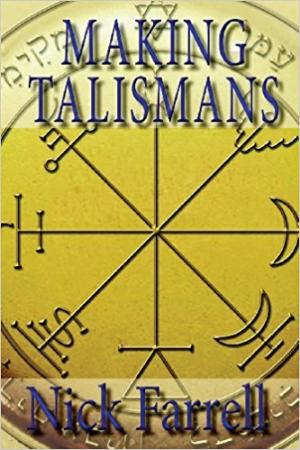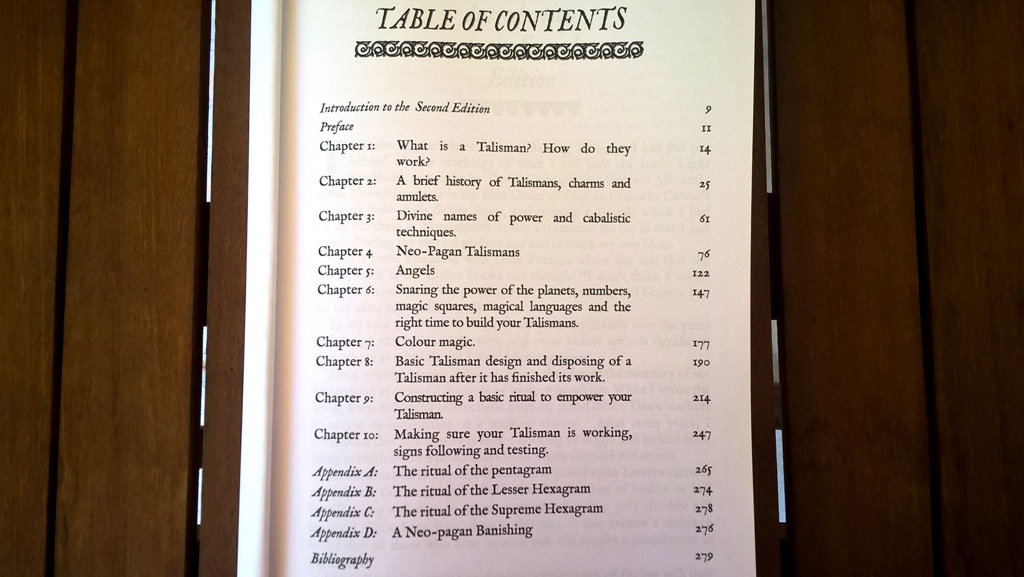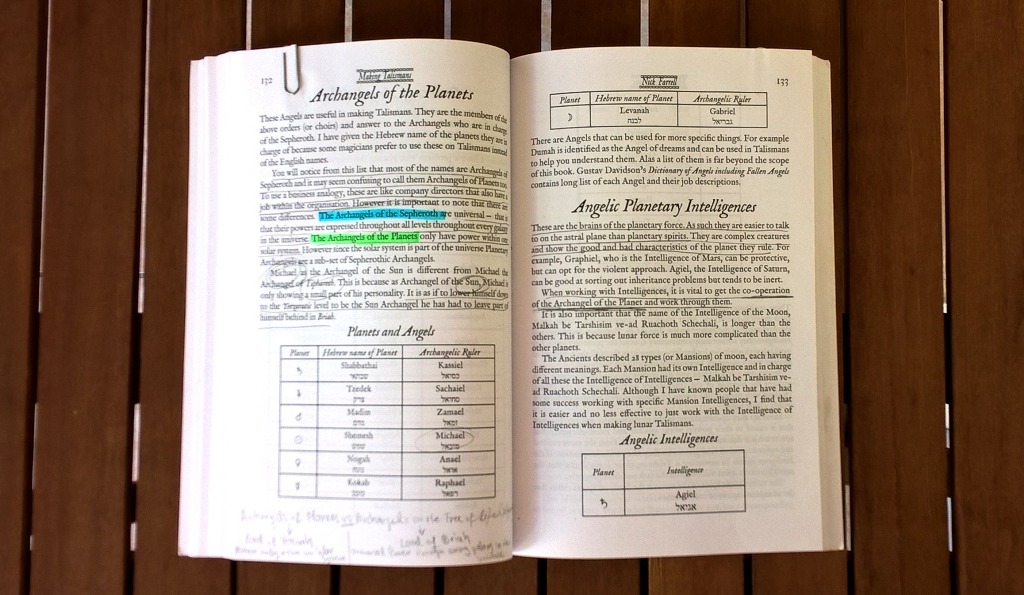Review no1
Written by Eirini Tsotsou
One of the things that make this book special is that the author not only provides the reader with the necessary information for creating a talisman from the start to the end but also what to do after the talisman has completed its work. Nicκ Farrell explains why each step that is described, is needed and for what purpose. There are details and in-depth information with simple examples - something I have not seen in other books with similar subject.
The structure of the book is very organized making it easy to use. Even if it deals with a difficult subject it is very well written with the chapters put just on the appropriate order so that the cohesion of the text unfolds smoothly and on time in order to be built the appropriate understanding. It takes the reader from the beginning and steadily builds his understanding into more and more advanced subjects. It approaches both beginner and advanced readers and at the same time practitioners from different traditions. You can find techniques from paganism, shamanism and the Order of the Golden Dawn so that any practitioner can choose what fits best with his practices and tradition.
As I wrote above this book is a guide from the start to the end. It first builds theoretical knowledge with history, ethics, definitions, structure and divine hierarchies. It explains matters like why Kabbalah is important, it presents different pantheons, there are different practical methods, many visualizations, pathworkings with instructions, techniques for balancing the energy in the body and for protection, it explains how to work with a god daily and other techniques for the reader to include in his practices. There is also information and guidance on how to use material from other sources.
There are useful tables that categorize all the information needed for the practical application that help the reader find quickly what he needs. There are tables about planetary correspondences, magical languages, colors, sigils, squares, symbols, hours, zodiac, angels, archangels, influences accompanied with explanation about what they are, what is their purpose and how they will be practically used with examples. It has ceremonial magic methods and neopagan approaches for different kinds of practitioners. After the theoretical knowledge has been built the book gives some talisman shapes and designs for use with examples on how they will be used according to the need and the correspondences described in the previous chapters.
At the end, there are some rituals to consecrate the talisman from which the reader can choose which one fits his practices. In this part, the book also includes parts on how to create a sacred space, the equipment needed and then the rite. After that, it presents ways to test if the talisman is working and if something has been gone wrong, there is a table that explains what to do or how to fix it. In the book, there is information on what to do with the talisman after it has completed its purpose. Additionally, it is described how to store everything that the reader will create. At this point, I present the table of contents.
The book offers solutions to questions that other books leave unanswered or never deal with. It also gives a plethora of important details, clarifications and “be careful” advice that any-level practitioner should keep in mind.
What I also liked about this book, even if most people ignore it or doesn’t matter to them, is how beautiful the sketches are inside, depicting the gods in great detail and harmony!
Review no2
Written by Constantinos Nterziotis
This a book about creating talismans. It is written by adept Nick Farrell. The target group are the beginners and especially those who practice Hermetic Kabbalah within the Golden Dawn tradition, but all Witches can use this book to enhance their talismans as it provides all the Agrippa-Barret-Heydon lineage of creating talismans with the use of:
- Magickal planetary squares and their improved seals, which I found very useful.
- Use of archangelic, angelic, intelligence sigils (Kabbalah magick) with the God-names of power (Golden Dawn Hermetic Kabbalah). (Hagiel's sigil is wrong)
- Geomantic sigils and their use in talismans within the Golden Dawn 3x3 square (there is a mistake in pg.208 with Albus and the square should be explained better).
- Use of geometric polygons that are attributed to each sephira (very good addition).
- Golden Dawn colour theory to invoke the sephirotic energies from the four worlds.
- Golden Dawn ritual and a pagan ritual (easy) with the assumption of Godforms (Golden Dawn technique)
- Pendulum chart to explore the energy of your talisman.
Lastly, there are advices, personal experiences from the writer and a ritual for destroying the talisman after it has done the work.
As Eirini wrote, there are things that you won't find anywhere else. Highly recommended for Wiccans and western ceremonial magickians. I would like to see a chapter on ancient talismans, but it is ok.












It amazes me how so many traditions follow these ancient protocols and roles,